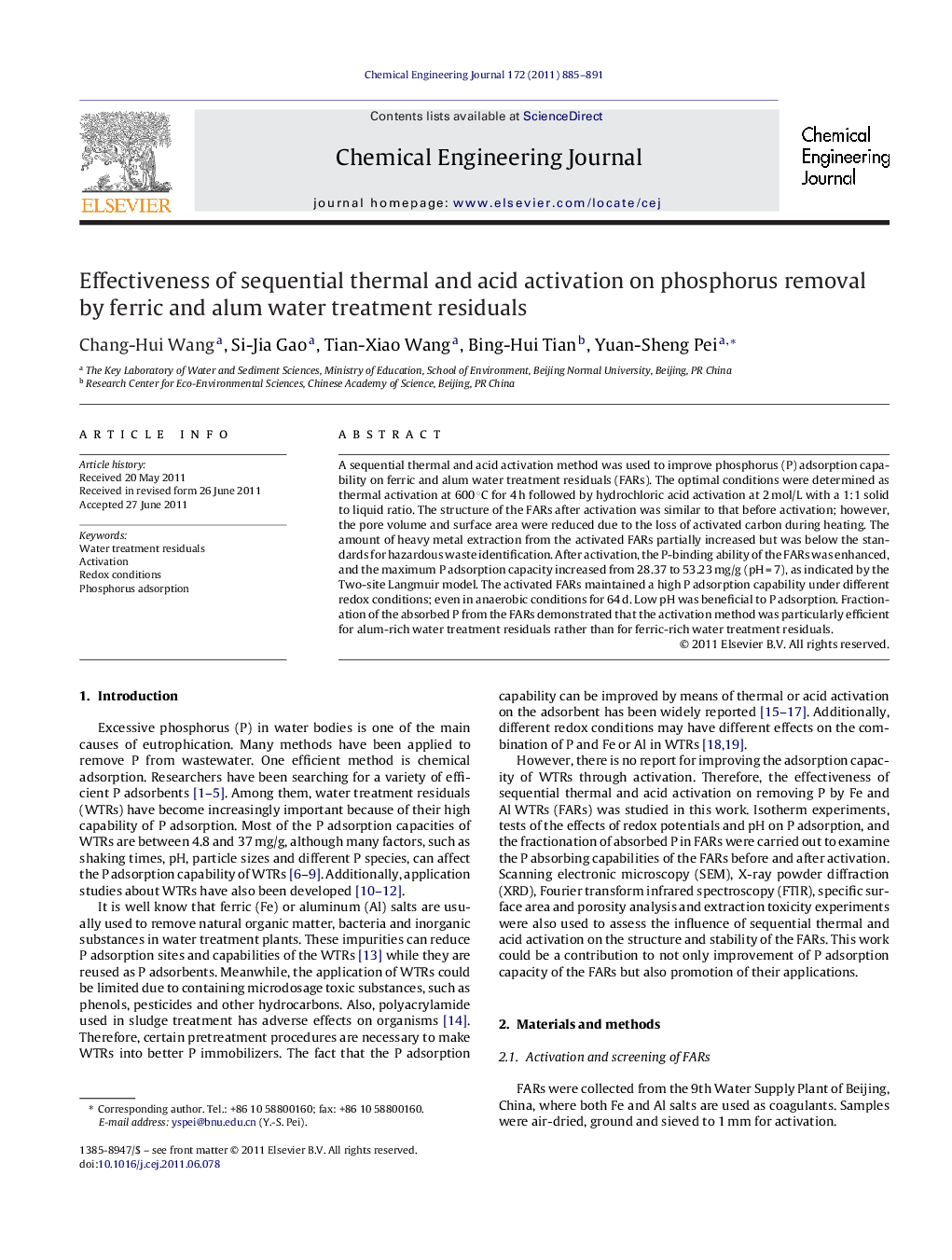| Article ID | Journal | Published Year | Pages | File Type |
|---|---|---|---|---|
| 150790 | Chemical Engineering Journal | 2011 | 7 Pages |
A sequential thermal and acid activation method was used to improve phosphorus (P) adsorption capability on ferric and alum water treatment residuals (FARs). The optimal conditions were determined as thermal activation at 600 °C for 4 h followed by hydrochloric acid activation at 2 mol/L with a 1:1 solid to liquid ratio. The structure of the FARs after activation was similar to that before activation; however, the pore volume and surface area were reduced due to the loss of activated carbon during heating. The amount of heavy metal extraction from the activated FARs partially increased but was below the standards for hazardous waste identification. After activation, the P-binding ability of the FARs was enhanced, and the maximum P adsorption capacity increased from 28.37 to 53.23 mg/g (pH = 7), as indicated by the Two-site Langmuir model. The activated FARs maintained a high P adsorption capability under different redox conditions; even in anaerobic conditions for 64 d. Low pH was beneficial to P adsorption. Fractionation of the absorbed P from the FARs demonstrated that the activation method was particularly efficient for alum-rich water treatment residuals rather than for ferric-rich water treatment residuals.
► Effect of P absorbed by activated water treatment residuals (WTRs) was studied. ► The P adsorption capacity of WTRs was enhanced after activated. ► The activated WTRs kept a high P adsorption capability under anaerobic conditions. ► The activated method was efficient for improving the binding ability of alum and P.
